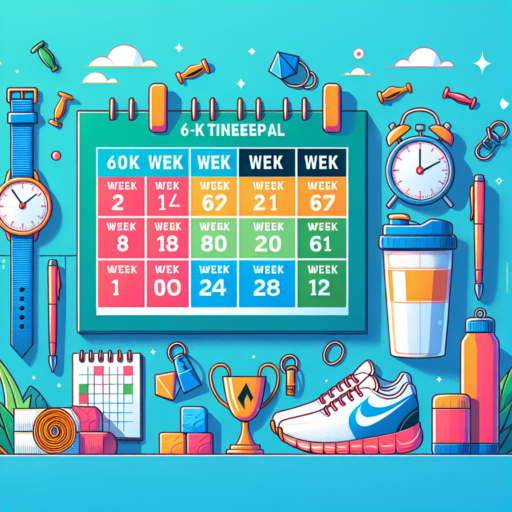How quickly can you train for a 10K?
Training for a 10K is a goal that many runners, both new and seasoned, set for themselves. The timeline for training can vary based on several factors including your current fitness level, running experience, and personal goals. In general, a beginner might take anywhere from 8 to 12 weeks to properly prepare for this distance.
Factors Influencing Training Duration
Your baseline fitness level plays a crucial role in determining how quickly you can train for a 10K. A person who can comfortably run a shorter distance, like 5K, might find themselves ready for 10K in less time than someone starting from scratch. Additionally, the amount of time you can dedicate to training each week will significantly impact your preparation timeline.
Training Schedules and Progression
A typical training schedule for a 10K involves running three to five times a week, incorporating a mix of long runs, speed work, and recovery days. As you progress, the intensity and duration of your runs will gradually increase. This balanced approach helps build endurance and speed, while minimizing the risk of injury. Remember, listening to your body and making adjustments to your training is key to avoiding burnout and achieving your 10K goal.
How to properly train for a 10K?
Training for a 10K is an exciting but challenging goal that requires a smart approach and dedication. It’s not just about running longer distances, but also about incorporating various training techniques to improve your endurance, speed, and running efficiency. To achieve your goal, it’s crucial to follow a structured plan that gradually increases your mileage, allows adequate recovery time, and prepares your body for the strain of running 10 kilometers.
Create a Training Schedule
Gradual Increase in Distance: Start by running shorter distances and gradually increase your mileage each week. A good rule of thumb is to increase your weekly total distance by no more than 10%. This slow buildup helps prevent injuries and builds endurance steadily.
Incorporate Different Types of Workouts
Running at the same pace every day won’t maximize your training benefits. Include a variety of workouts such as:
- Speed Work: Intervals or tempo runs can improve your speed and cardiovascular fitness.
- Long Slow Distance (LSD) Runs: These runs are crucial for building endurance and should be done at a comfortable pace.
- Strength Training: Incorporating body weight or resistance training can improve your running economy and reduce the risk of injury.
How do I train for a 10K with no experience?
Training for a 10K with no experience might seem daunting at first, but with the right approach, it’s entirely feasible. Embarking on this journey involves setting realistic goals, establishing a structured training plan, and committing to a consistent running schedule. Whether you’re new to running or looking to challenge yourself with a new fitness goal, preparing effectively is key to crossing the finish line with confidence.
Setting Realistic Goals
Before lacing up your sneakers, it’s crucial to set achievable goals. Begin by assessing your current fitness level and gradually increase your running distance each week. A common strategy for beginners is to start with short runs or walks, progressively enhancing the duration and intensity. This incremental approach helps reduce the risk of injury and builds endurance over time. Remember, completing the race is an achievement in itself, so focus on reaching the finish line rather than competing against time.
Establishing a Structured Training Plan
A structured training plan is your roadmap to success. Ideally, your plan should span at least 8 to 12 weeks and incorporate various workouts to build your running stamina. Essential elements of a comprehensive plan include interval training, long runs, rest days, and cross-training activities. Interval training can help improve your running speed and efficiency, while long runs increase your endurance. Incorporating rest days is vital for recovery, preventing overtraining and injuries. Additionally, cross-training activities, such as cycling or swimming, can enhance your overall fitness without the impact stress of continuous running.
Adhering to a training plan while monitoring your progress allows you to adjust your goals and workouts according to your growing capabilities. Celebrate each milestone, no matter how small, as each step brings you closer to successfully completing your 10K challenge.
How do beginners run 10 km?
Certainly! Here’s a structured response focusing on the provided H2 heading.
—
Running 10 km is a common goal for many beginners who have recently embraced the joy of running. It’s a significant milestone that indicates a considerable level of fitness and endurance. However, reaching this goal requires a strategic approach, focusing on gradual progress and consistency. For beginners, the journey to running 10 km starts with understanding and accepting your current level of fitness before pushing forward.
Building Your Base
Before aiming for the 10 km mark, it’s crucial to build a solid running base. This entails starting with shorter distances and gradually increasing your mileage. A good rule of thumb is to increase your weekly distance by no more than 10%. This gradual increment helps in minimizing the risk of injury and ensures a comfortable progression in your training.
Incorporating Strength Training
Strength training is often overlooked by beginners but plays a vital role in preparing your body for longer runs. Incorporating exercises that strengthen your core, legs, and glutes can significantly improve your running efficiency and endurance. It’s not just about the distance covered; it’s also about how your body copes with the increasing demands of running longer distances.
Patience and perseverance are key when aiming to run 10 km. It’s a challenging yet achievable goal for beginners, given the right approach to training and self-care. Remember, every runner’s journey is unique, so listen to your body and adjust your training accordingly. With time, dedication, and the right strategy, reaching the 10 km milestone is not just a possibility but an inevitable success.










